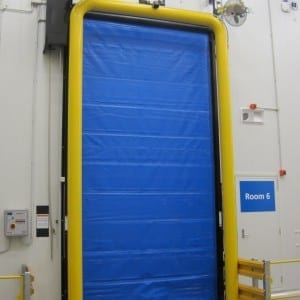
Editor’s note: This article originally appeared in the October 2015 issue of Food Manufacturing Facility managers are always looking to increase their production while decreasing their annual energy bills. However, doing both at once can be a daunting task. Since loading docks are on the exterior of the building, and interface directly with potentially steamy (or frigid) outdoor environments, they are often the first areas targeted for energy efficiency upgrades. However, many interior sections of food manufacturing facilities are also significant contributors to energy waste and decreased productivity. ALSO SEE: 14 Strategies to Save up to 70% in Energy Costs Using the Latest in Warehouse Lighting .. .and More Here are three tips for boosting operational efficiency on the interior of your facility — and your bottom line, along with it. Use faster-acting doors for cold storage areas There’s a common misperception that choosing cold storage doors means making compromises between air temperature control, productivity and low energy costs. In reality, it doesn’t have to. Thanks to recent advances in door technology, facility managers can now have their (ice cream) cake and eat it, too. Refrigerated spaces are designed to trap cold inside and keep heat and humidity out. Traditionally, they have used heavy, insulated, rigid doors with a high R-value. While it’s true that higher R-values mean less energy loss through door panels (conduction), there is a downside for high-traffic openings. These side-acting doors are typically slow-moving, resulting in longer door cycle times and higher rates of air infiltration. This not only wastes energy, it makes it harder to maintain temperature control inside the freezer. Furthermore, traditional hard-core doors are susceptible to forklift damage. Unless the damaged door is quickly fixed, there can be substantial energy losses as a result of poor sealing. Thus, for high-traffic openings, energy […]


